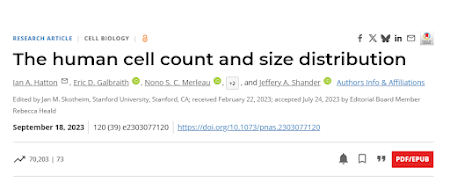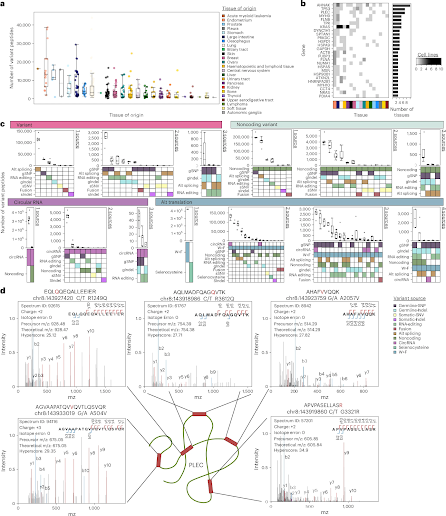Guess who finally got the ASMS PRESS PASS! Now....would....it have been an easier conference to have given 3 separate talks and not had a bunch of press responsibilities? Yes. it would have been.
Waters saved me a bunch of time by inviting me to their conference but then not letting me in, so I used that to sit in my room for just a few and stare at the wall in the dark to recenter, and I sincerely appreciated that time. I don't think they had anything in proteomics to show off. I just went to be polite.
On the proteomics side the big 3 had big hardware drops.
SCIEX dropped the 8600 which could possibly maybe put them up there as having the most sensitive high resolution system in the world? Maybe? Those numbers are crazy. Let's see where they go. And the proprietary quad sliding stuff on top of it makes it a really interesting and competitive bit of hardware. This launch was, of course, overshadowed to some degree by a very public disagreement with a popular open software development team. I'm not paying attention, but people being open minded about demo'ing different big proteomics solutions seemed to be paying very close attention to it. GenomeWeb dropping a story on it during the conference couldn't have been the coolest thing for their marketing people to deal with.
Thermo had the Astral 2 Zoom. Higher sensitivity, 270 Hz max speed (up from 200), capable of doing TMT 32-plex -with some important caveats. Like the TIMSTOFs you have to do 2 scans for TMT. One for the peptide sequencing and one for the low mass fragment ions. In the second scan the fragment ions spend more time in the TOF region so they make more passes and then they get the minimum resolution to separate out the ions. The bonus is you can optimize the high mass and low mass fragment acquisitions - and - of course, Proteome Discoverer first launched when the first Orbitrap XL was out there and it had to do 2 MS/MS for every TMT/iTRAQ, so it can take these data. The Astral is super fast, so even 2 scans/peptide and even when one scan is a little slower, is probably really fast.
Thermo also had the Excedrin? Excedion? Benchtop high resolution with higher scan speeds. You can run your Orbitrap at 3,000 resolution and get 70 scans/second. It also has ETD built in. Who would want 3,000 resolution and ETD? Anyone worried about the collapse of their transient in the Orbitrap! Big intact protein, people, for sure! The signal optimization seemed to allow bottom up where the MS/MS actually looks pretty good at 3,000 resolution - from a signal perspective. Some people have noted the mass accuracy seems a bit wonky. Not something I'd worry about, Makarov probably has that fixed already, but it's not like you can't run a higher resolution on it.
EvoSep had the EvoSep 2 (Eno). Higher pressure loading pumps, better chromatography and higher signal. Looked very plug in play for anyone with and EvoSep One.
Bruker had a pile of launches as detailed in earlier blog posts. The TIMSOmni seemed to be stealing the show on the proteomic side, but we also saw an improvement on the TIMSTOF Ultra2 in the addition of the Athena Ion Processor. (Box now says TT Ultra2 AIP). From van Eyk lab stuff, it looks like a solid signal boost but it also adds some interesting level of control to the Ultra2 that seems under-explored. Imma send some samples up. The fun thing about the TIMSOmni is that you just turn off the OmniTrap and you've got a TT Ultra2 AIP.
Man - was there some cool automation stuff - everywhere! Robots for proteomics!! And downstream data analysis. I'm currently demo'ing Mass Dynamics stuff and I'll post how it goes here.
OH. And this was a big one for me. New vendors for N2 generators!! Parker was there and excited to talk to anyone who was tired of the generator that came with their instruments but Swissgas was a completely new vendor to me and we talked a lot about longterm cost breakdowns. It's one thing for me to whine about my N2 generator. It's nice to have useful information to share with people when they say "okay, what are my other options?"
Alternative suppliers for some things you use a lot? That probably shouldn't go here, but if you were there, you could see where maybe someone else was like "we're also very good at making stage tips..." or "would you like to try one of these things?" I'm rarely going to turn down free stuff even if it is a stranger offering me something that looks suspiciously like a captivespray emitter. I'm probably not going to try it out, though.
I was part of the Mobilion BILLIE launch (and, again, I'm a compensated member of advisory board) and that was really fun. Hopefully data will be up on PRIDE super soon so you can look at it. All of the data showed was on Agilent QTOFs that were not designed for proteomics, so it's super impressive to see the instrument doing competitive proteomics. It was super cool to work with that team and to field questions like "what could that front end do to a system that was already a good proteomics system??" And I'd also like to know that answer! It's currently a completely vendor neutral system, so hopefully we'll all know sometime soon.














































